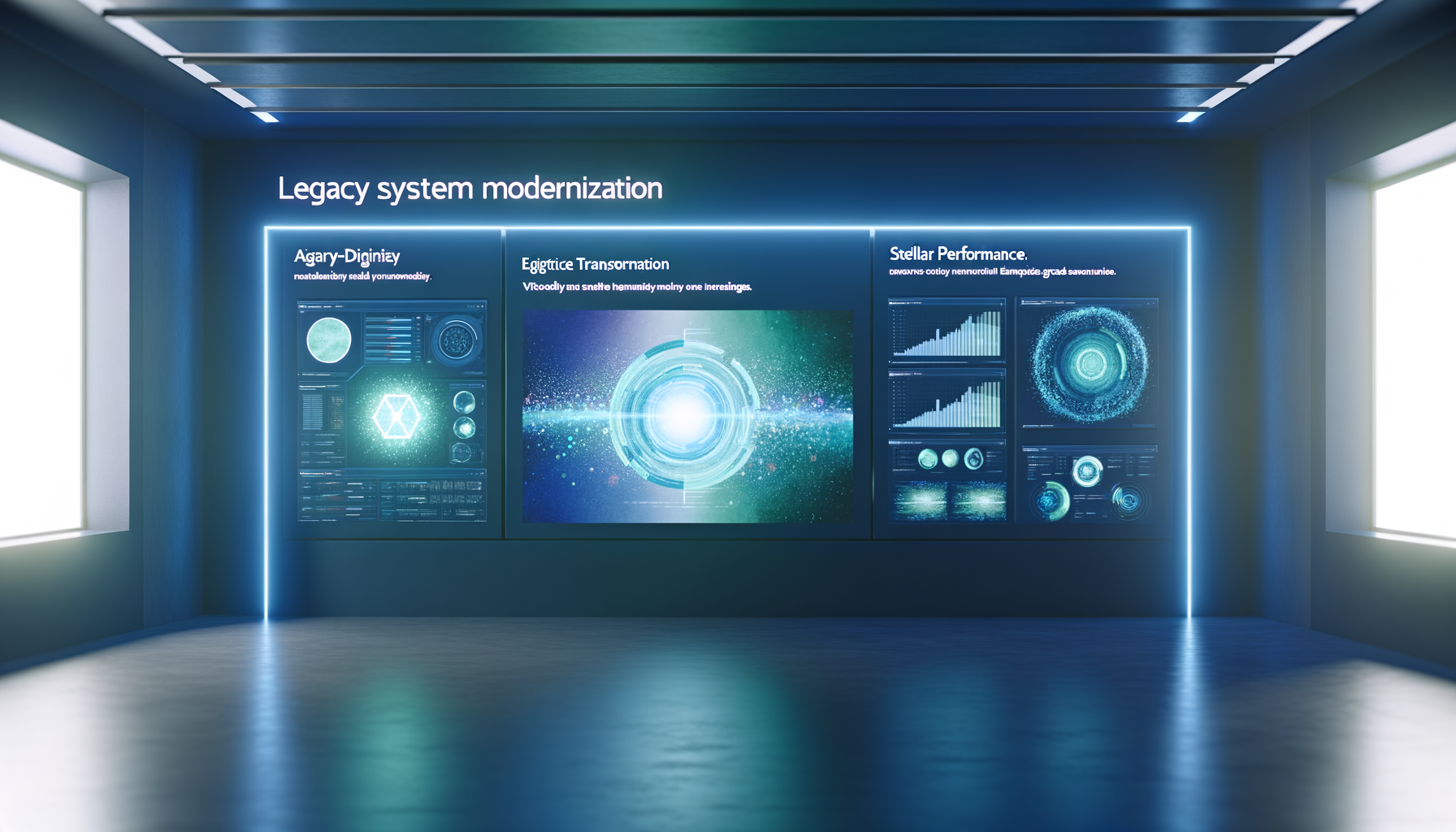Is your legacy system holding your business back from reaching its full potential? With technology advancing at lightning speed, keeping up with modern demands is no longer optional—it's essential. In this comprehensive guide, we'll explore how legacy application modernization is not just about updating systems, but about reimagining your entire digital strategy. From monolith to microservices, we’ll unveil actionable strategies to ensure your business remains competitive and agile.
Understanding Legacy System Modernization
Why It Matters Now More Than Ever

Team collaborating on legacy code review with modern tools.
Legacy systems, often built decades ago, are not equipped to handle current technological demands or integrate with modern applications. This disconnect poses a significant risk, leading to inefficiencies and security vulnerabilities.
Modernization isn't just a technological upgrade but a strategic pivot that aligns your IT infrastructure with your business goals. It involves replacing old systems with more adaptable, scalable solutions that can support innovation and growth.
Ignoring the need for modernization can result in a competitive disadvantage. According to a 2023 Forrester report, companies that modernize legacy systems see a 30% increase in operational efficiency and a 15% reduction in IT costs.
CALLOUT
Legacy systems can limit your growth potential. Modernizing ensures your infrastructure aligns with future technological advancements.
Key Benefits of Modernizing Legacy Applications

Visualization of scalable cloud architecture.
Modernizing legacy applications provides numerous benefits, including enhanced scalability, improved security, and better data integration. These improvements directly support business objectives, driving growth and efficiency.
Scalability is a crucial advantage. Modern systems can easily expand to accommodate increased loads, a vital feature in today's fast-paced digital environment.
Furthermore, modernized applications integrate seamlessly with AI and cloud technologies, enabling advanced analytics and automation capabilities that were previously unattainable.
LIST
- •Enhanced scalability
- •Improved security
- •Seamless integration with AI and cloud
Strategies for Successful Legacy Modernization

Diagram showing transition from monolith to microservices.
Approaching legacy modernization requires a structured strategy. The first step is thorough assessment—understanding what needs to change and why.
Transitioning from monolith to microservices is a popular strategy. This involves breaking down applications into smaller, independent modules that can be developed and deployed independently.
Another effective approach is adopting low-code development platforms, which allow for rapid development and deployment, reducing time-to-market.
LIST
- •Conduct thorough assessments
- •Adopt microservices architecture
- •Utilize low-code platforms
AI and Automation in Legacy Modernization
Accelerating the Modernization Process

AI-driven analytics dashboard showcasing modernization insights.
AI and automation play pivotal roles in accelerating legacy modernization. They streamline processes, reduce human error, and enable predictive maintenance.
Integrating AI into legacy systems provides deeper insights through data analytics, enhancing decision-making capabilities.
Moreover, automation can take over repetitive tasks, freeing up valuable human resources for more strategic activities.
QUOTE
AI isn't just a tool; it's a catalyst for modernization, transforming how businesses operate and innovate.
Cloud-Native Transformation: The Future of Modernization

Graph illustrating cloud-native transformation benefits.
Cloud-native architectures are revolutionizing how businesses approach legacy system modernization. By leveraging cloud capabilities, companies can achieve unprecedented flexibility and resilience.
A well-defined cloud migration strategy is essential. It involves evaluating current applications, determining cloud readiness, and planning the migration path.
Embracing cloud-native technology not only future-proofs your IT infrastructure but also enhances operational efficiency and reduces costs.
LIST
- •Leverage cloud flexibility
- •Develop a clear migration strategy
- •Enhance operational efficiency
Frequently Asked Questions
QWhat are the key benefits of modernizing legacy applications in 2025?
QHow can AI and automation accelerate legacy system modernization?
QWhat role does cloud-native architecture play in updating legacy systems?
Conclusion
Legacy modernization is not just a technical upgrade but a strategic transformation vital for business growth and competition.
Future Vision
Embrace modernization today to secure your business's future in the digital age.
Schedule your AI audit with Quicklook.
